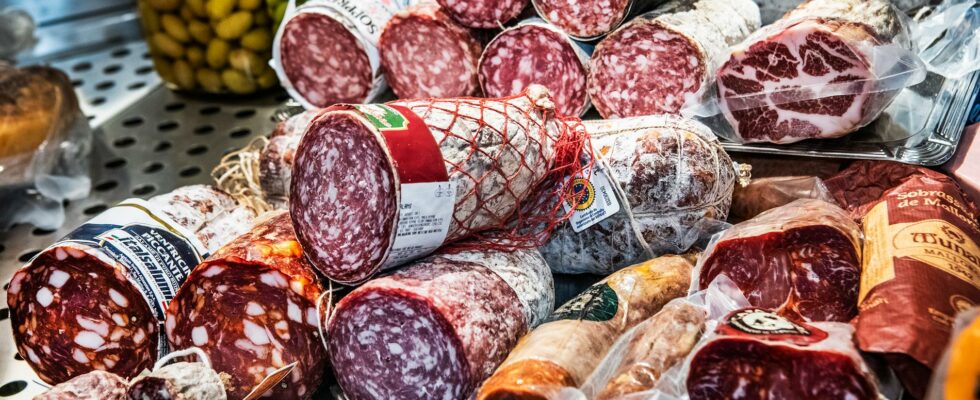unsaveSave
expand-left
full screen Skipping the charcuterie tray or taking thin slices seems good for health. Archive image. Photo: Tomas Oneborg/Svd/TT
Cutting back on meat and cured meats can reduce the risk of developing type 2 diabetes. Researchers draw those conclusions from an extensive international study.
– We are omnivores but we eat far too much meat, says nutrition expert Mai-Lis Hellénius
When the updated Nordic nutritional recommendations were presented in 2023, the advice was clear: Limit the amount of meat to a maximum of 350 grams a day. Of processed meat, such as ham, salami and bacon, we should eat “as little as possible”, said project manager Rune Blomhoff to TT at the time.
The advice is now supported in a large so-called meta-analysis where researchers from several countries, including Sweden, have analyzed large amounts of data on meat and cured meats in the diet and type 2 diabetes. In total, almost two million participants from 20 countries are covered.
Gradual increase in risk
The conclusion, published in the Lancet Diabetes & Endocrinology, increases the risk of developing type 2 diabetes incrementally the more meat you eat. Consumption of poultry is also linked to increased risk, although it is not as high.
– This is one of the largest observational studies on meat consumption and diabetes that has been done and it is very solid, says Mai-Lis Hellénius, doctor and professor at Karolinska Institutet, who did not participate in the study herself.
In this type of study, it cannot be established that it is meat consumption that causes the increased risk, but Hellénius says that it is another sign that today’s nutritional recommendations to limit meat intake are correct.
– Type 2 diabetes is increasing worldwide and creeping down with age. In light of that, this study is an important piece of the puzzle.
The researchers give some examples: For every 100 grams of red, non-processed meat a day that someone eats, the risk of developing type 2 diabetes increases by 10 percent. For processed meat, each intake of 50 grams increases the risk by 15 percent.
Pull down
But Hellénius doesn’t think you should be afraid of the ham slice on the sandwich.
– It’s about balance and what kind of lifestyle we have in general. Both diet and physical activity are important. Humans are omnivores and there is room for both fast carbohydrates and meat. But many in Sweden, especially young men, eat too much meat.
The study does not answer why meat and cured meats would increase the risk of type 2 diabetes. But there are a few theories. For example, meat can contain nitrosamines, which can be carcinogenic and also affect many cells and functions in the body, which affects the risk of diabetes. Meat also contains saturated fatty acids which are not good for us.
– But also protein and iron, which are good. Once again – it’s about not eating too much, says Hellénius.
FACT Black or red?
What is the difference?
Red meat means meat from four-legged animals such as beef, pig, sheep/lamb, game and reindeer. Cured products mean meat that has been smoked, treated with nitrites or preserved in other ways.
It can be, for example, sausage, bacon, smoked ham, salami and liver pie.
It has long been known that a high consumption of meat, especially processed meat, increases the risk of, among other things, colon cancer and cardiovascular diseases.
Source: Swedish Food Agency, Mai-Lis Hellénius
Read more
